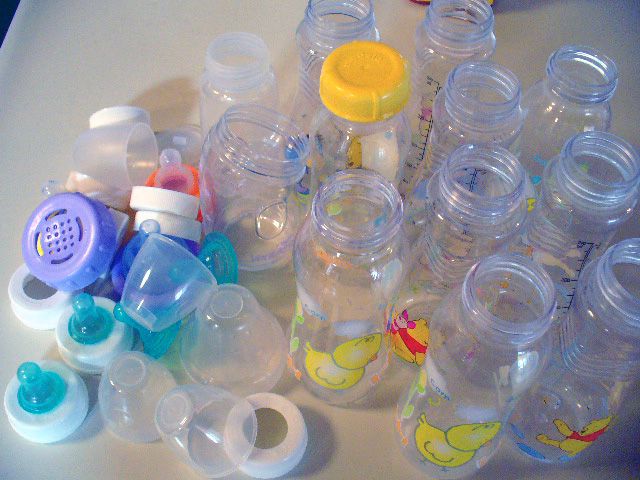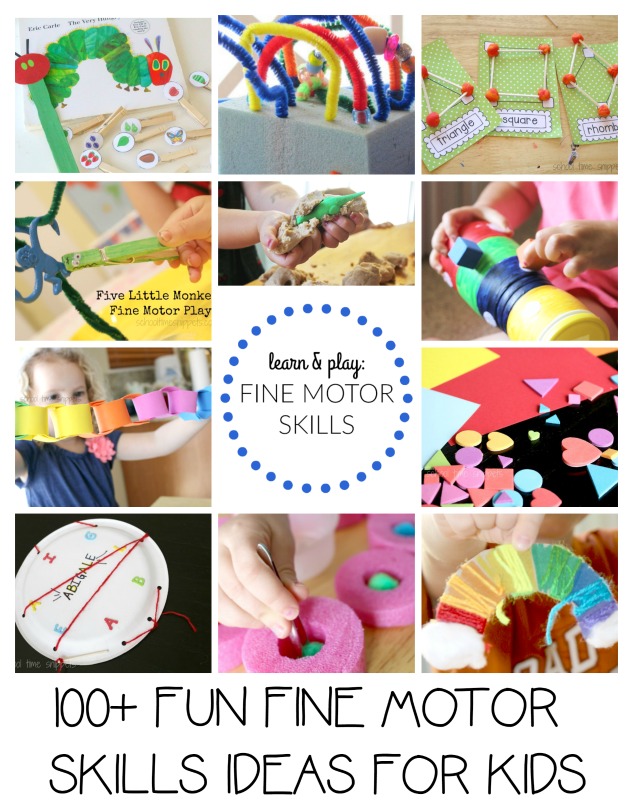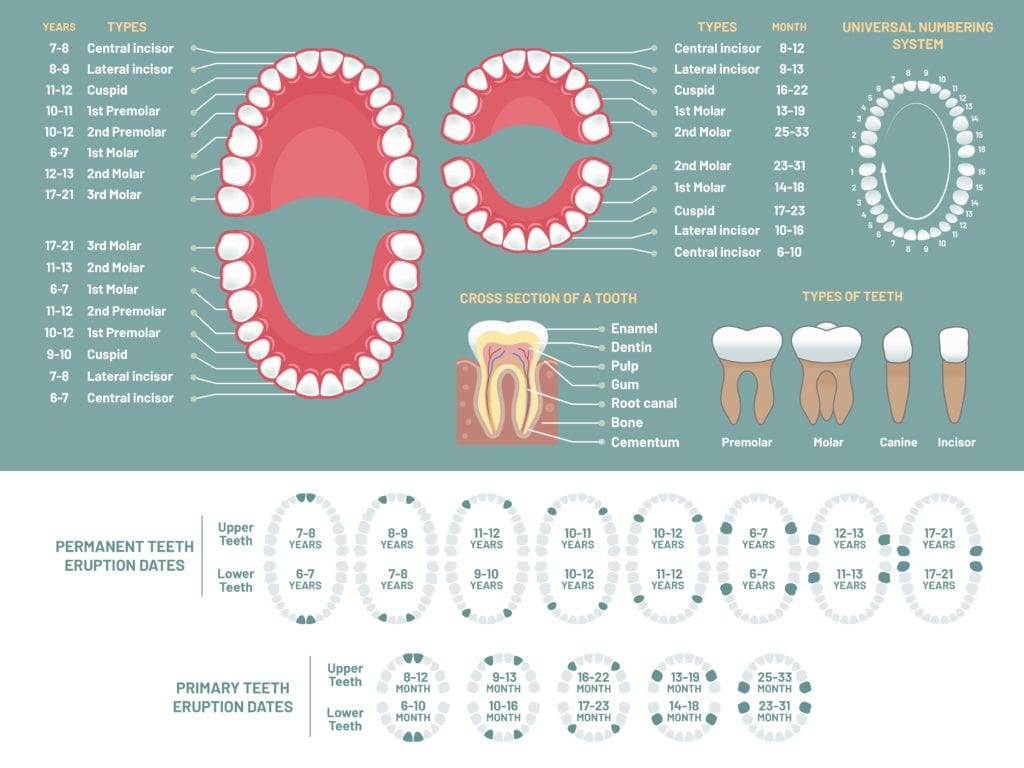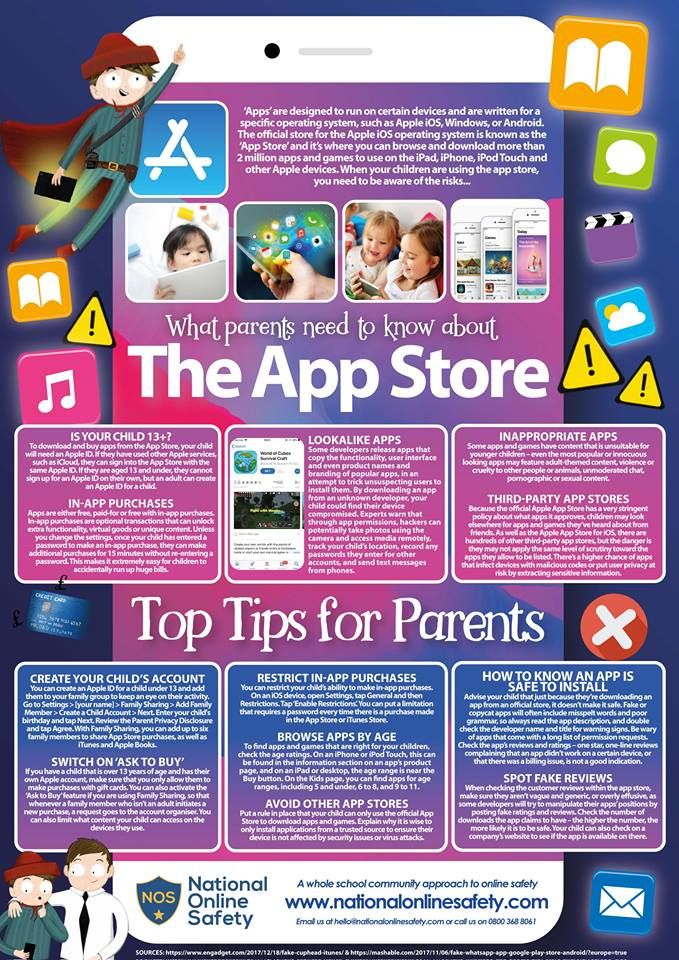Are you born with all of your teeth
On Top, On Bottom, and Babies
Do you know how many teeth you have? Depending on if all of your adult teeth came in, or if you’ve ever had teeth removed or damaged, all adults have roughly the same number of teeth.
Do you know how many teeth you have? Depending on if all of your adult teeth came in, or if you’ve ever had teeth removed or damaged, all adults have roughly the same number of teeth. Teeth are an important part of both your bone structure and your digestion.
Every tooth has three layers: the enamel, dentin, and pulp.
- Enamel.
Enamel is the visible, white, outer layer. This hard surface protects the inner
layers of each tooth from the damage of decay or injury. Enamel is the hardest
tissue in the whole body. - Dentin.
This is the middle layer of the tooth, which is the most similar to bone
tissue. Dentin makes up the majority of the tooth structure. It has millions of
tiny tubes connecting it to the life-source of the tooth: pulp. - Pulp.
The pulp is the living core of each tooth, and the innermost layer. The pulp is
made up of blood and nerves.
The part of the tooth above the gumline is called the crown. And the part of the tooth below the gumline is called the root, which attaches the tooth to your jawbone.
On average, babies first start getting new teeth around 6 months. But it’s not unheard of to see a 3 month old with a tooth, or a 1 year old with just one tooth still. All a child’s “baby teeth” should be in between 2-3 years old.
Baby teeth are also called primary, or deciduous teeth, because they’re temporary and they fall out. A full set of baby teeth is 20 teeth: 10 on top and 10 on bottom.
We get baby teeth because as a child, our mouths aren’t big enough for a full set of adult teeth, but kids still need teeth to chew. So all people are born with both full sets of teeth in their jaw. First come the baby teeth and later, as kids grow older, they lose them and gain their larger, adult teeth one by one.
Even though baby teeth are “temporary,” it’s important that they’re kept clean so that they’re healthy, to maintain lifelong oral health. Tooth decay in childhood can adversely affect adult teeth.
Brush your child’s baby teeth for 2 whole minutes, just as you do your own.
How to care for baby teeth
- Start a brushing routine as soon as your baby’s first tooth pops up.
- Use a clean baby towel with warm water to rub each tooth. You can rub to clean gums, too.
- Let your child chew on a cold, wet towel. This can soothe teething soreness.
- When your toddler has most of their teeth in, you can switch to brushing with a kid’s toothbrush (usually one with soft bristles). Be sure to use one with a small head so that you can comfortably and effectively brush all their teeth.
Share on Pinterest
People start losing their baby teeth and getting their adult set as early as 5 years old. Adults have 32 teeth. You should have this full set of adult teeth by your late teens.
Adult teeth include incisors, canines, premolars, and molars:
- 8
incisors. Your four front teeth on the top and bottom are sharp for holding
and cutting food. Incisors
also help you sense the texture and kind of food you eat. - 4 canines
or cuspids. The pointed teeth on the top and bottom are called canine teeth, or
cuspids. They have cusps for grabbing and tearing food. - 8
premolars. These teeth are between the cuspids and molars both physically
and in form. Premolars
look like molars but they have two cusps and are sometimes called bicuspids.
Premolars cut and tear food. - 12 molars.
You have eight molars on top and bottom. They have broad chewing surfaces to
grind down food before it’s finally swallowed. This includes wisdom
teeth, your third set of molars, which can show up as late as your early
20s and are often removed.
Not everyone can comfortably fit all 32 adult teeth in their mouth.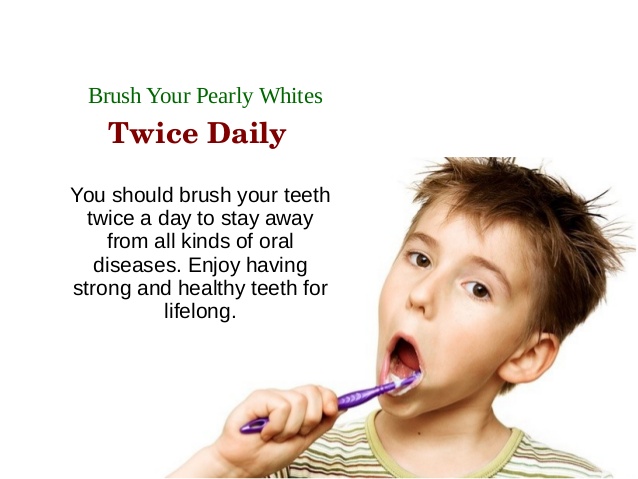 Science shows that human jaws began shrinking around the time humans transitioned from hunter-gather societies to sedentary farmers. This could be because the new foods that humans could eat were cooked softer and easier to chew, and thus eating to survive didn’t require a big strong jaw.
Science shows that human jaws began shrinking around the time humans transitioned from hunter-gather societies to sedentary farmers. This could be because the new foods that humans could eat were cooked softer and easier to chew, and thus eating to survive didn’t require a big strong jaw.
Having too many teeth, or overcrowding, can cause:
- misaligned teeth
- increased decay
- impacted wisdom
teeth - risk for periodontal disease
This is why many people have their wisdom teeth removed.
You get two full sets of teeth over your lifetime. As a baby, you have 20 teeth, and as an adult you should have 32 teeth.
Among the 32 teeth, each has its own function in the chewing and eating process. Take good care of your teeth and keep your gums healthy in order to avoid cavities and other overall health issues.
Teeth development in children - Better Health Channel
The development of primary teeth begins while the baby is in the womb.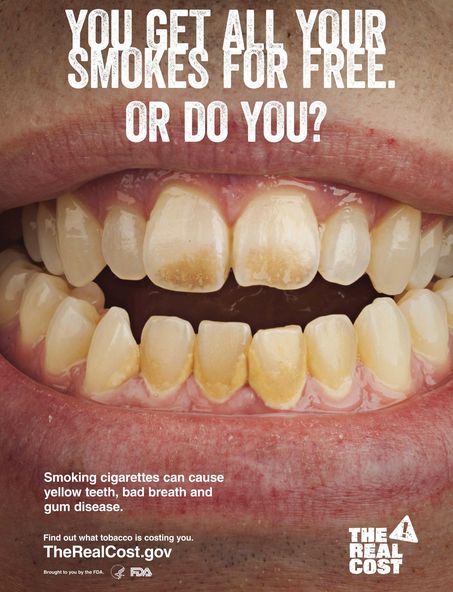 At about 5 weeks' gestation, the first buds of primary teeth appear in the baby's jaws. At birth, the baby has a full set of 20 primary teeth (10 in the upper jaw, 10 in the lower jaw) hidden under the gums. Primary teeth are also known as baby teeth, milk teeth or deciduous teeth.
At about 5 weeks' gestation, the first buds of primary teeth appear in the baby's jaws. At birth, the baby has a full set of 20 primary teeth (10 in the upper jaw, 10 in the lower jaw) hidden under the gums. Primary teeth are also known as baby teeth, milk teeth or deciduous teeth.
Types of teeth
The names of the different types of teeth are:
- Incisors – the front teeth located in the upper and lower jaws. Each incisor has a thin cutting edge. The upper and lower incisors come together like a pair of scissors to cut the food.
- Canines – the pointy teeth on both sides of the incisors in the upper and lower jaws; used to tear food.
- Premolars – which have flat surfaces to crush food.
- Molars – these are larger than premolars towards the back of the mouth, with broad, flat surfaces that grind food.
Teething
'Eruption' refers to the tooth breaking through the gum line. In babies, tooth eruption is also called teething. The timing of tooth eruption differs from child to child. For example, one child may cut their first tooth when only a few months old, while another may not start teething until they are 12 months old or more.
For example, one child may cut their first tooth when only a few months old, while another may not start teething until they are 12 months old or more.
The exact timing may be different from child to child but the order of tooth development is more consistent.
Generally, the average child has their full set of 20 primary teeth by the age of 3 years.
Managing the teething process
Babies’ immune systems start to change when they are around 6 months old. Along with the tendency to put things in their mouths, this makes them more prone to illnesses. Symptoms of common childhood illnesses such as changes in sleep and eating patterns, fussiness, rash, drooling, runny nose and diarrhoea are often linked to teething when that might not be the cause. If your child has these symptoms, speak to your child’s doctor about other possible causes such as bacterial, viral or middle ear infections.
Teething takes about 8 days, which includes 4 days before and 3 days after the tooth comes through the gum.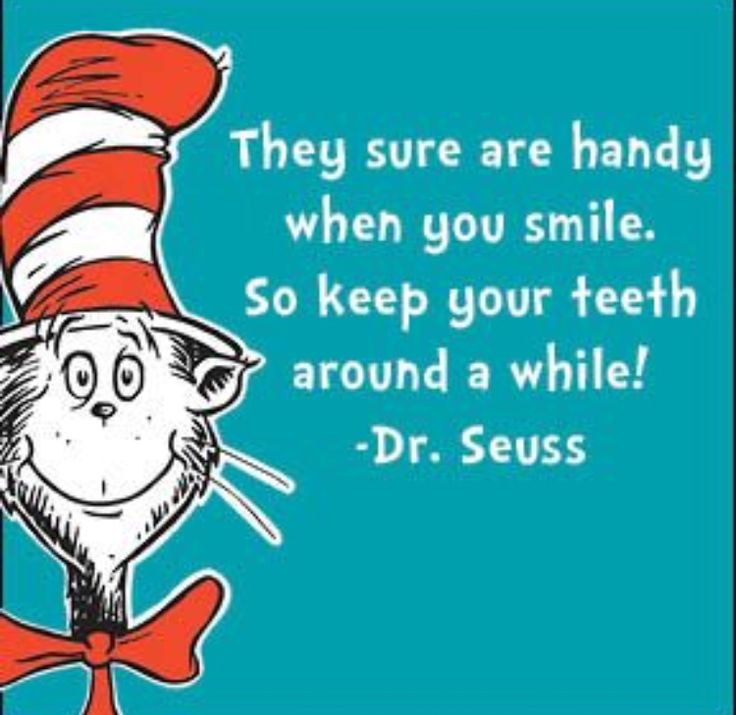 (You may see a blue-grey bubble on the gum where the tooth is about to appear. This is called an eruption cyst and will usually go away without treatment.) During this time, it can be tough to keep children comfortable.
(You may see a blue-grey bubble on the gum where the tooth is about to appear. This is called an eruption cyst and will usually go away without treatment.) During this time, it can be tough to keep children comfortable.
Some tips include:
- Massage – gently massage the gum with clean fingers or a soft, wet cloth.
- Chilled (not frozen) teething rings or rusks – pressure from a cold object can relieve discomfort from teething. Do not sterilise plastic teething rings in boiling water or dishwater, unless specified by the manufacturer. Be sure to check product information before buying teething rings. Avoid the ones that use a plastic softener called 'diisononyl phthalate'.
- Unsweetened teething rusks or sugar-free teething biscuits – these can be given to infants over 6 months who have started eating solids.
- Pain-relieving medications – paracetamol works well for children. Ibuprofen may also help, but it is not as well tolerated by children.
- Dry the drool – the skin around the mouth, particularly the chin area, can become irritated.
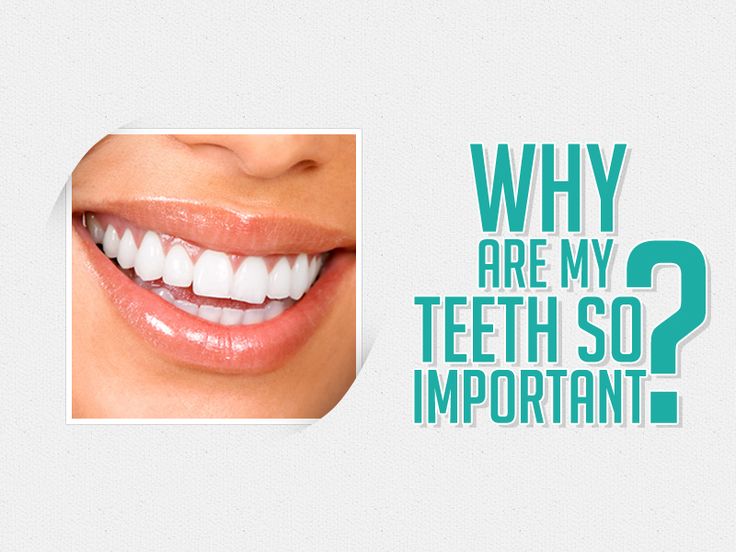 Gently wipe this away with a soft cloth throughout the day.
Gently wipe this away with a soft cloth throughout the day.
Some treatments should be used with caution or not at all. These include:
- Teething necklaces – amber is believed by some people to release healing oil on contact with warm skin. The oil is thought to be soothing or help to reduce pain. Although amber teething strings or necklaces are designed to be worn around the neck, wrist or ankle, they have been incorrectly used to chew on. The ACCC has issued a product safety statement about amber teething necklaces, warning of possible choking and strangulation hazards. Parents are asked to consider other less risky ways of providing relief from teething.
- Teething gels – common teething gels contain 8.7–9.0% of the ingredient choline salicylate. Salicylate is related to aspirin. The use of aspirin for children younger than 16 is not recommended because in some children it has been known to cause Reye's syndrome – a rare but potentially lethal condition that can cause liver and brain damage.
 Although there has not been a reported case of Reye's syndrome associated with the use of teething gels, the general advice is that it is a risk not worth taking when there are other things available.
Although there has not been a reported case of Reye's syndrome associated with the use of teething gels, the general advice is that it is a risk not worth taking when there are other things available.
Teething gels containing benzocaine are also not recommended for use in children. Research also suggests that teething gels may not relieve teething pain, rather the act of massaging it into the gum is what helps.
Caring for baby teeth
Some parents may feel that caring for baby (primary) teeth isn't as important as caring for adult (permanent) teeth, simply because baby teeth fall out.
However, baby teeth are very important. They allow children to chew food and speak properly, and they reserve the spaces in the gums for future adult teeth.
Tooth decay in baby teeth
Tooth decay is preventable. The risk of developing dental decay can be significantly reduced by good oral hygiene habits and a healthy diet from a young age.
Decayed baby teeth need to be treated by a dental practitioner.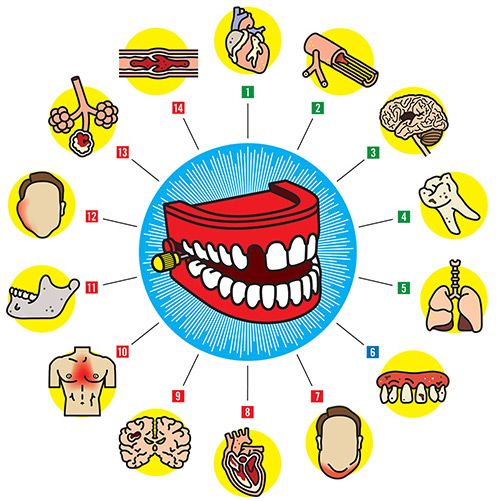 In some cases, specialist treatment in a hospital under a general anaesthetic is needed. If neglected, decayed baby teeth can lead to mouth pain, dental abscesses (a boil or swelling resulting from infected teeth), and problems with the surrounding teeth. Severe decay in baby teeth can affect eating and sleep, which can slow growth.
In some cases, specialist treatment in a hospital under a general anaesthetic is needed. If neglected, decayed baby teeth can lead to mouth pain, dental abscesses (a boil or swelling resulting from infected teeth), and problems with the surrounding teeth. Severe decay in baby teeth can affect eating and sleep, which can slow growth.
If a baby molar is lost too early due to severe decay, adjacent baby teeth may drift into the gap and create spacing problems for the adult tooth when it comes through.
Watch this Australian Dental Association video about caring for children’s oral health.
Loss of baby teeth
From the age of about 6 years, baby teeth start to become 'wobbly' and fall out to make way for adult teeth. It is perfectly normal for a child to lose their first tooth up to a year or 2 earlier or later than 6 years of age. Girls generally lose teeth earlier than boys. The first tooth to fall out is usually located in the front of the lower jaw.
Losing baby teeth can be unsettling and painful for young children.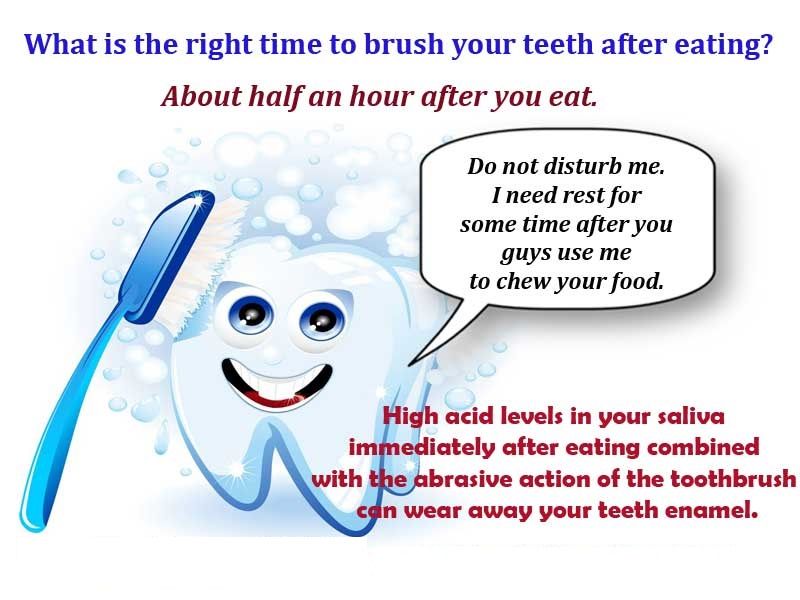 Suggestions for parents include:
Suggestions for parents include:
- Reassure your child that losing baby teeth is a natural process and new adult teeth will come in their place. It's normal for gums to be tender and bleed a little, although some children experience little or no discomfort while losing their teeth.
- Use cold packs or over-the-counter anti-inflammatory or pain-relieving medication to help relieve loose tooth pain. Ask your dentist or pharmacist for recommendations on appropriate medication for your child.
- Make use of the Tooth Fairy. This myth has lasted a long time with good reason! The idea of getting some money or another reward in exchange for a tooth might soften the idea of tooth loss for your child.
Permanent teeth
Permanent teeth are also known as adult teeth or secondary teeth. The permanent teeth start to develop in the jaws at birth and continue after a child is born. By about 21 years, the average person has 32 permanent teeth, including 16 in the upper jaw and 16 in the lower jaw.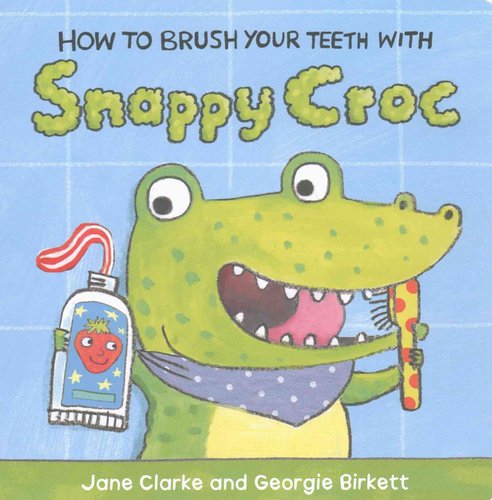 (In some cases, the third molars – commonly called wisdom teeth – do not develop or do not erupt so some people only have a set of 28 permanent teeth.)
(In some cases, the third molars – commonly called wisdom teeth – do not develop or do not erupt so some people only have a set of 28 permanent teeth.)
At about the age of 6 years, the first permanent molar teeth erupt. These 4 molars (2 in each jaw) come out behind the child's baby teeth. Other permanent teeth, such as the incisors, canines, and premolars, erupt into the gaps in the gum left by baby teeth that are lost.
As with baby teeth, the timing for when the permanent teeth come through can differ. Generally, the order of and rough timeline for each type of permanent tooth is:
- First molars – between 6 and 7 years.
- Central incisors – between 6 and 8 years.
- Lateral incisors – between 7 and 8 years.
- Canine teeth – between 9 and 13 years.
- Premolars – between 9 and 13 years.
- Second molars – between 11 and 13 years.
- Third molars (wisdom teeth) – between the ages of 17 and 21 years, if at all.
Mouthguards protect children's teeth
Mouthguards help protect teeth and prevent dental injuries, particularly when playing and training for contact sports.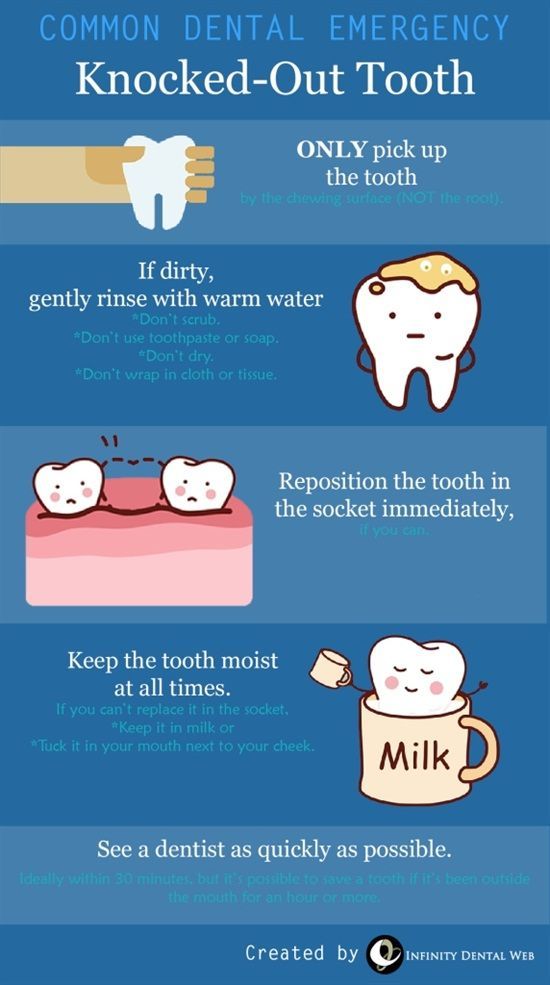 All children playing contact sports should wear a custom-fitted mouthguard, even primary school-age children. Custom-fitted mouthguards are comfortable, allow speech and do not restrict breathing. Learn more about mouthguards.
All children playing contact sports should wear a custom-fitted mouthguard, even primary school-age children. Custom-fitted mouthguards are comfortable, allow speech and do not restrict breathing. Learn more about mouthguards.
Where to get help
- Your dentist
- Australian Dental Association ‘Find a Dentist’ or Tel. (03) 8825 4600
- Dental Health Services Victoria Tel. (03) 9341 1000 or 1800 833 039 outside Melbourne metro - provides public dental services through the Royal Dental Hospital of Melbourne and community dental clinics, for eligible people.
- Maternal and Child Health Line (24 hours) Tel. 13 22 29
- NURSE-ON-CALL (24 hours, 7 days) Tel. 1300 60 60 24 – for expert health information and advice
- Royal Children's Hospital (Dentistry) Tel. (03) 9345 5344
Too hard brush and 8 other bad things you do with your teeth
A beautiful smile and healthy teeth are the key to your attractiveness. It is better to take care of your teeth right away than to spend a lot of money on their treatment later.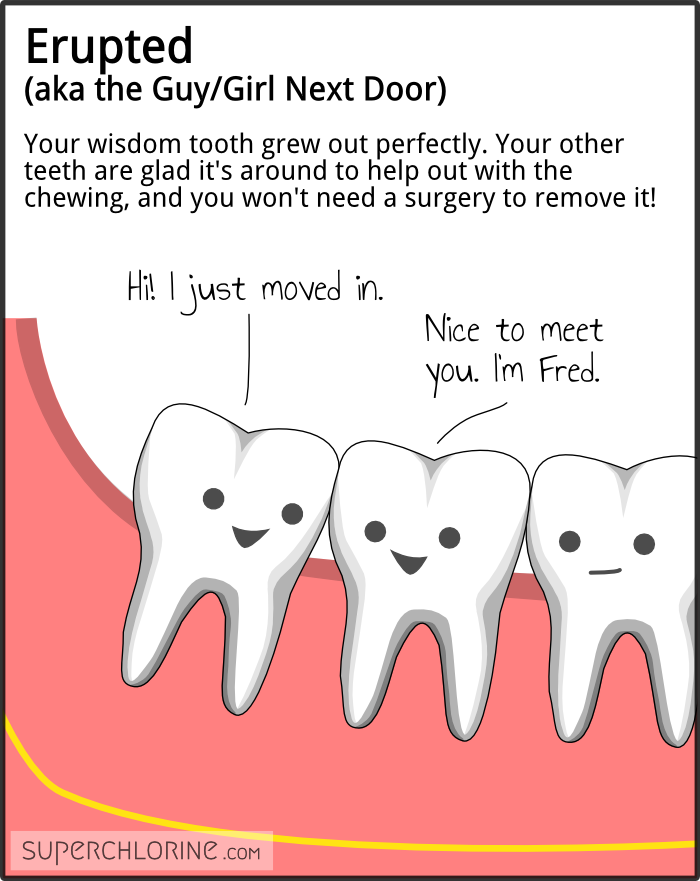 But, alas, each of us makes mistakes day after day.
But, alas, each of us makes mistakes day after day.
Website editor
Tags:
Health
Expert advice
Dental care
Teeth whitening
healthy teeth
You do not pay attention to bleeding gums
If every time after brushing your teeth you spit out a little blood, this is an alarming bell and a reason to go to the doctor! This is how periodontal disease begins - gum disease that leads to tooth loss - and it is not at all necessary to experience pain. The gums may bleed slightly for years, but then this will lead to disastrous consequences. It is possible that you will be advised to change your brush to a softer one or purchase a special toothpaste to strengthen your gums.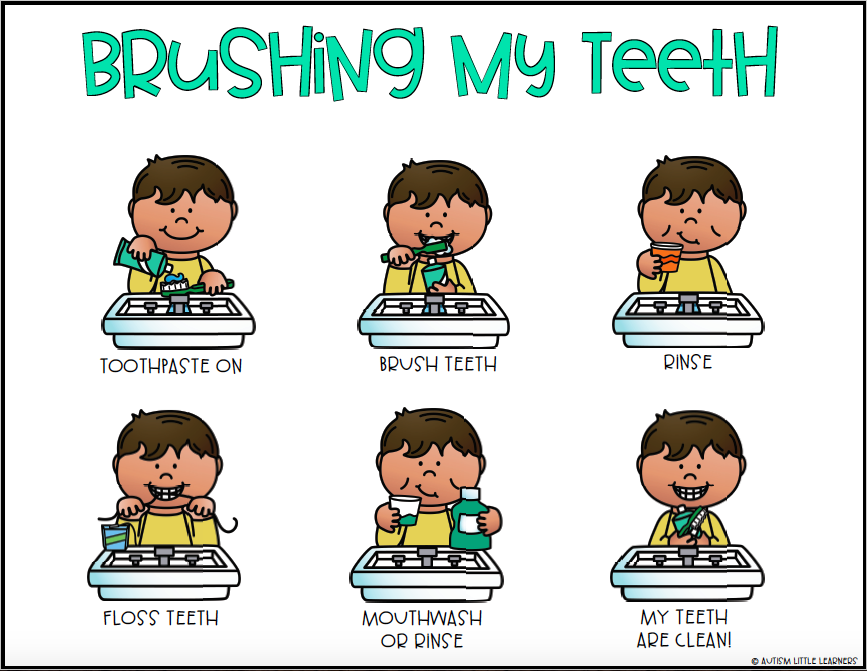
Brush your teeth with chaotic movements
Any dentist will acquaint you with the correct brushing technique. Alas, most of us brush our teeth incorrectly, which leads to poor quality plaque removal and rapid enamel wear. Your movements should be "sweeping", along the "up and down" trajectory - this is the only way to brush your teeth from the front and back sides. But chewing teeth can be cleaned from above in a circular motion.
Regular whitening
Alas, even the most modern and gentle whitening is stressful for your enamel. Restoring toothpastes can only compensate for part of the damage that whitening will cause to your teeth - the enamel will become thinner and more fragile, which means that the risk of caries increases several times. Carefully!
Choosing a toothbrush that is too hard
If you think that a hard toothbrush will help you brush your teeth more effectively, you are wrong.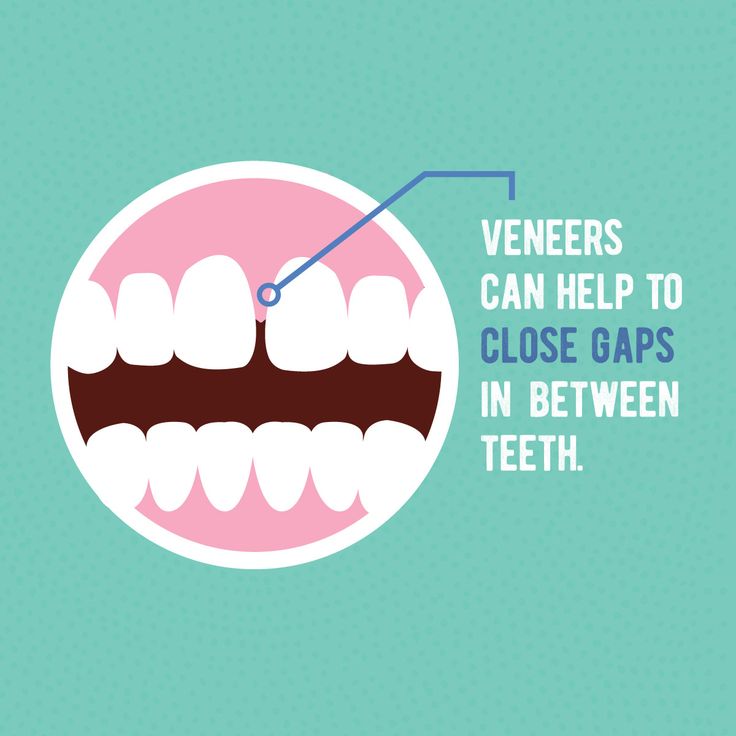 Such a brush should be chosen only with a dentist, and it is needed only if you have plaque too quickly or if you smoke a lot. In all other cases, even if you are a tea and coffee lover, an ordinary brush with medium hard bristles is enough - your enamel will last longer this way!
Such a brush should be chosen only with a dentist, and it is needed only if you have plaque too quickly or if you smoke a lot. In all other cases, even if you are a tea and coffee lover, an ordinary brush with medium hard bristles is enough - your enamel will last longer this way!
You're choosing the wrong toothbrush
A good brush is one with as many bristles as possible. Manufacturers offer us brushes with various rubber inserts, slots and sparse villi - in fact, all this is a marketing ploy that saves material. Therefore, when choosing a toothbrush, pay attention to those whose bristles are as thick as possible - it will allow you to clean your teeth of plaque efficiently.
You don't heal small caries that don't hurt
If you notice manifestations of caries on your teeth, it can only mean one thing - it's time to see a doctor! Minor caries may not hurt for several years, but destroy the tooth from the inside - you yourself will not notice how you lose it.
Allowing sudden changes between cold and hot temperatures
The worst thing you can do to your teeth is eat ice cream with tea or coffee. Sharp temperature changes are detrimental to enamel - microcracks appear in it, which can then lead to the development of caries. So be careful!
Don't go for professional teeth cleaning
Professional teeth cleaning is a procedure that will not only make your teeth whiter (finally see the true color of your enamel!) and get rid of tartar, but also strengthen them. During cleaning, a special mineral composition is applied to the enamel, which restores its surface and seals small cracks.
Do not floss
Do you remember how many times the dentist advised you to buy dental floss? And how many times did you actually buy it? We guess - zero. Do not neglect this simple little thing - only the floss allows you to effectively clean the spaces between your teeth.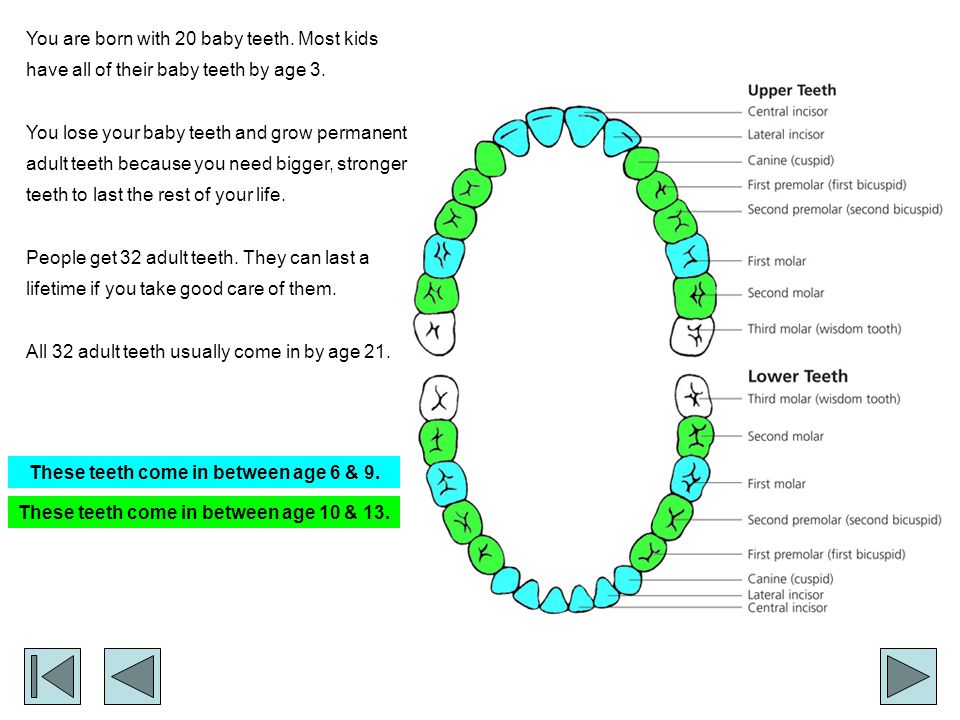 Caries, by the way, most often begins there! Use it at least once a day - it's not difficult at all, but your teeth will be grateful.
Caries, by the way, most often begins there! Use it at least once a day - it's not difficult at all, but your teeth will be grateful.
Photo: Getty Images
15 tips for caring for your teeth
What is a healthy and beautiful smile? First of all, this is the attitude of the person himself to his health and beauty, and only then the work of a dentist. The oral cavity needs to be taken care of from childhood. How to properly care for your teeth?
Teeth Care Rules
1. Brush your teeth properly. Brush your teeth at least 2 times a day, morning and evening before going to bed. You can brush your teeth both before and after meals. If you brush your teeth before eating, do it 15 minutes before eating so as not to spoil the taste with toothpaste, and rinse your mouth with water after breakfast. You can add half a teaspoon of baking soda to the water or replace the water with a mouthwash.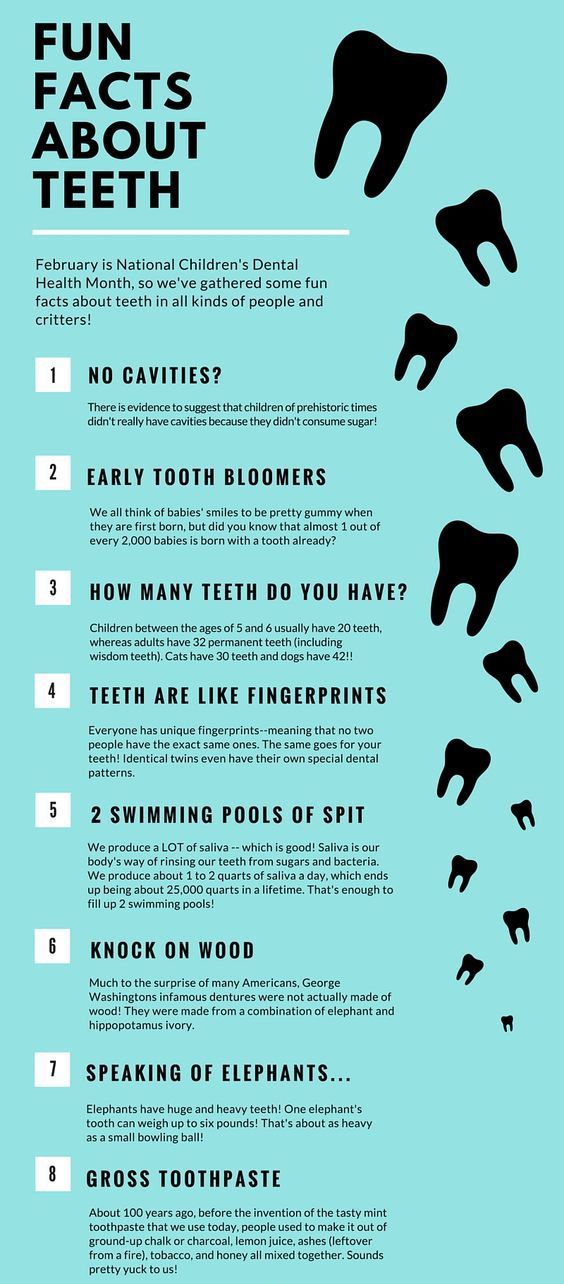
If you are a supporter of brushing your teeth after meals, this is also great, because in this way you will be sure that the remains of food will be removed and you will save yourself from the need to additionally rinse your mouth. There is no right or wrong way. Choose the one that suits you. It doesn't matter when you brush your teeth, it matters HOW YOU brush it.
2. Use dental floss. There is a huge selection of dental floss: round and flat, super floss, flavored, fluorine coated, etc. Of course, you make the choice yourself, but a dentist can help you with this. You need to floss once a day before going to bed, combined with subsequent brushing of your teeth. The movement of the thread is done only along the axis of the tooth.
3. The right toothbrush. Toothbrush must have artificial bristles. The toothbrush head should be about 2-2.5 teeth in size. The hardness of the bristles is chosen by the dentist. If you do not know which brush to choose, it is better to take medium hardness. See also: How to choose a toothbrush?
See also: How to choose a toothbrush?
4. The right toothpaste. There are a large number of toothpastes and each has its own function: - preventive; - containing medicinal additives; - whitening, etc. Only a dentist can say which one you personally need. However, despite this, not a single toothpaste will perform its function if professional teeth cleaning has not been carried out before, which allows you to eliminate plaque and tartar.
These are symptoms that cannot be treated at home. Remember that commercially available toothpaste supplies your teeth with up to 30% calcium and fluoride. Supplement calcium and fluorine, which are required by our body and teeth, from food containing these components (milk, kefir, fermented baked milk, cottage cheese, cheese, green tea, legumes, parsley, dill, cilantro)
See examples of our therapists' work.
5. Brushing time . The average brushing time is 2-3 minutes.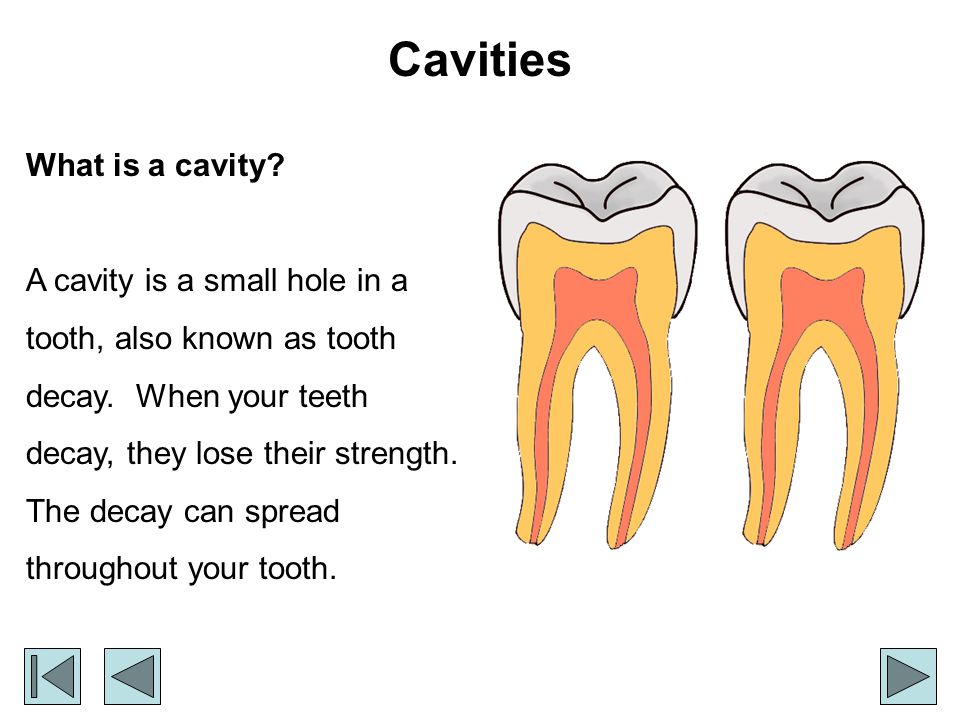 To clean the inner and outer surfaces of the teeth, following the rule "from red to white", i.e. the direction of movement of the toothbrush should be from the gums to the top of the tooth. So food debris and bacteria will not be able to get into the gum pockets, while you prevent the development of putrefactive and inflammatory processes.
To clean the inner and outer surfaces of the teeth, following the rule "from red to white", i.e. the direction of movement of the toothbrush should be from the gums to the top of the tooth. So food debris and bacteria will not be able to get into the gum pockets, while you prevent the development of putrefactive and inflammatory processes.
6. Cleaning the soft tissues of the oral cavity. Cleaning the inside of the cheeks and tongue is an important factor that eliminates microorganisms. If the toothbrush has an additional soft tissue cleaning function on the back side, then the surface of the cheeks is automatically cleaned during brushing.
The surface of the tongue can then be further cleaned. Tongue cleaning can be done with a toothbrush or tongue scraper. It is important to know that if there is a coating on the tongue, "bald patches" or other changes, cleaning the tongue should be postponed and see a dentist.
7. Use of rinse aids. There are different rinse aids. What exactly do you need, - the dentist will tell you. But if there is no way to find out from the dentist, choose a prophylactic rinse. Rinses contain active substances in liquid form, which easily penetrate into hard-to-reach areas of the oral cavity (between teeth, at the junction of teeth and gums, etc.), kill bacteria and wash away plaque - the main cause of dental diseases (caries) and gums (gingivitis).
There are different rinse aids. What exactly do you need, - the dentist will tell you. But if there is no way to find out from the dentist, choose a prophylactic rinse. Rinses contain active substances in liquid form, which easily penetrate into hard-to-reach areas of the oral cavity (between teeth, at the junction of teeth and gums, etc.), kill bacteria and wash away plaque - the main cause of dental diseases (caries) and gums (gingivitis).
It can be used before and after cleaning the mouth. The rinse aid used before cleaning helps to soften plaque on the teeth, after cleaning - to fix the result.
Dental care rulesRecommendations
1. Chewing gum. What does chewing gum do? It can also be attributed to the means of oral care. Of course, it is better to chew gum without sugar. The gum removes soft plaque and food debris, it also increases salivation, which further softens plaque and promotes the release of lysozyme (an antibacterial agent).
However, chewing gum for more than 7 minutes is not worth it! This time is enough for her to cope with the tasks and freshen her breath.
2. Hard objects. Do not damage your teeth by trying to open beer caps, cracking nuts, biting off fishing line, etc. – this can only lead to injury to the tooth (cracks, chips)
3. Rinse your mouth with sugary drinks. Do not rinse your mouth with sweet drinks - this only contributes to the formation of caries. Also, do not rinse your mouth with coffee and alcoholic beverages. Coffee tends to stain teeth and fillings a darker color. Alcohol tends to dry out the mucous membrane, which can lead to pathological changes in the mucous membrane.
4. Combination of food temperatures. Do not combine hot food with cold food at the same time. This leads to the formation of microcracks in the enamel and to the formation of caries
5. Only one brush. Do not use one toothbrush for several family members.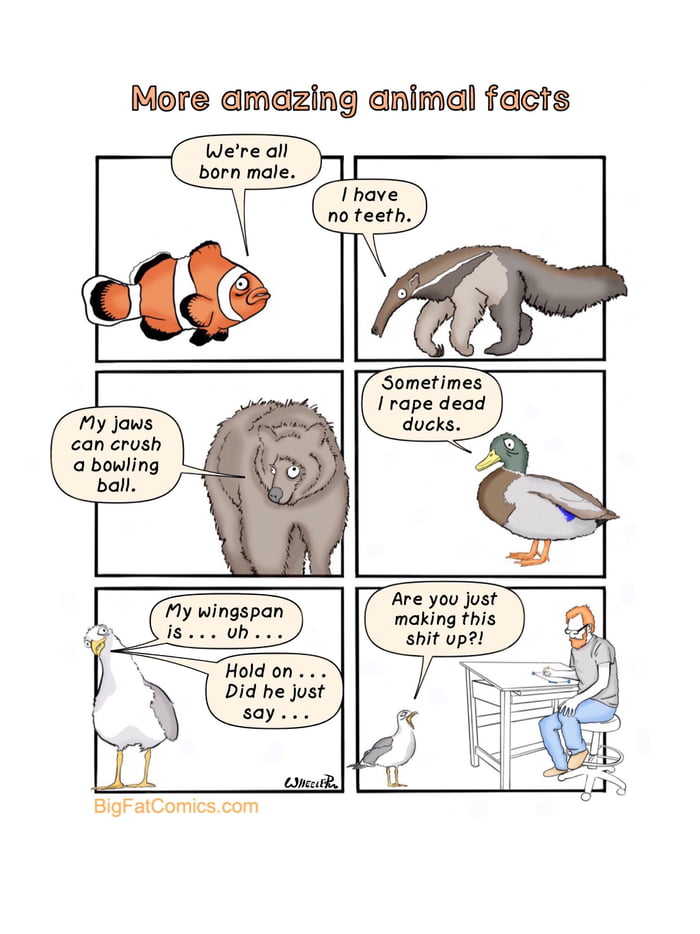 The microflora of the oral cavity is different for each person and the transmission of cross-infection through the brush to another person can lead to adverse consequences. It is especially dangerous if the owner of the brush has a dangerous disease (hepatitis, AIDS, syphilis, etc.).
The microflora of the oral cavity is different for each person and the transmission of cross-infection through the brush to another person can lead to adverse consequences. It is especially dangerous if the owner of the brush has a dangerous disease (hepatitis, AIDS, syphilis, etc.).
6. Bad breath. If you are worried about bad breath, but the oral cavity is in order, then you need to check the gastrointestinal tract, ENT organs, lungs. Raw fruits and vegetables can help you get rid of the smell. First, raw fruits and vegetables contribute to the mechanical cleaning of the teeth, tongue and mouth.
Secondly, they maintain an acidic environment in the mouth, which prevents the growth of putrefactive bacteria. Thirdly, these products contain natural antibiotics - phytoncides, which restore the normal microflora of the oral cavity.
7. Frequency of visits to the dentist. It is necessary to undergo an examination by a dentist once every six months.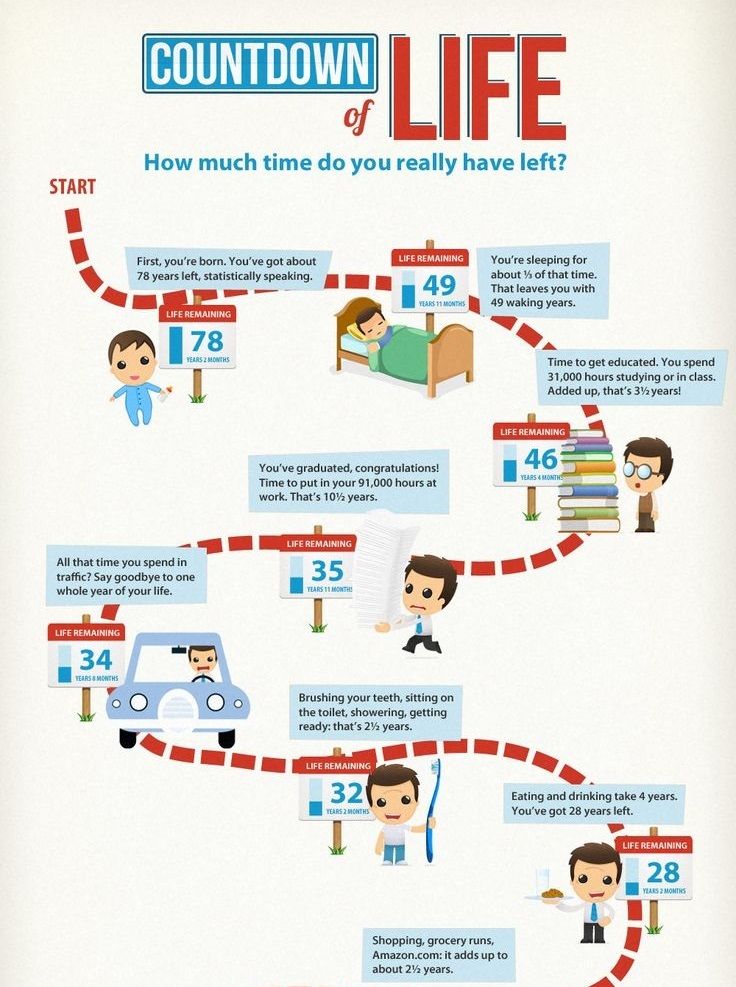
Ultrasonic teeth cleaning: what is it?
8. Bad habits . Be sure to quit smoking or limit smoking if possible. The components present in tobacco smoke tend to worsen the color of teeth, and harmful substances contained in tobacco smoke cause vasoconstriction and, as a rule, disrupt blood circulation in the smoker's mouth.
In addition, tobacco smoke contains harmful toxins that suppress the immune system, which leads to the development of harmful and putrefactive bacteria, and as a result, infectious and inflammatory processes in the oral cavity occur.
Dental care for childrenDental care for children
What could be better than a beautiful smile? It is necessary to take care of the oral cavity from an early age. Already at the age of two years, a mother should teach her baby to brush his teeth by giving him a soft baby brush.
First, the child must learn to do this without pasta.


